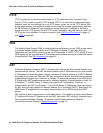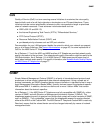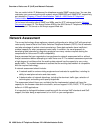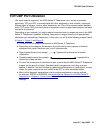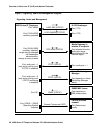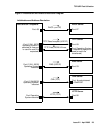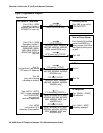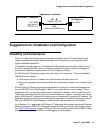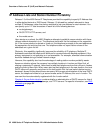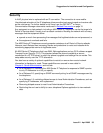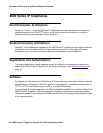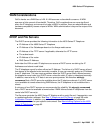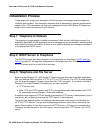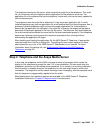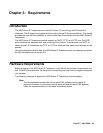
Overview of Voice over IP (VoIP) and Network Protocols
32 4600 Series IP Telephone Release 2.2 LAN Administrator Guide
IP Address Lists and Station Number Portability
Release 1.5 of the 4600 Series IP Telephones provided the capability to specify IP Address lists
in either dotted decimal or DNS format. Release 1.5 allowed key network elements to have
multiple IP Addresses, rather than being restricted to just one address for each element. You
can specify up to 127 total characters in each list of the following devices:
● router/gateways,
● DHCP/TFTP/HTTP servers, and
● the media server.
Upon startup or a reboot, the 4600 Telephone attempts to establish communication with these
various network elements in turn. The telephone starts with the first address on the respective
list. If the communication is denied or times out, the telephone proceeds to the next address on
the appropriate list and tries that one. The telephone does not report failure unless all the
addresses on a given list fail.
Obviously, this capability significantly improves the reliability of IP telephony. Multiple IP
Addresses maximize the telephone’s likelihood to communicate with backup equipment if the
primary equipment is not operating or is not accessible. For example, alternate communication
would be needed during a limited network outage.
However, this capability also has the advantage of making station number portability easier.
Assume a situation where the company has multiple locations in London and New York, all
sharing a corporate IP network. Users want to take their telephones from their offices in London
and bring them to New York. When users start up their telephones in the new location, the local
DHCP server will generally route them to the local switch. But the local switch denies service
because it knows nothing about these new users. With proper administration of the local DHCP
server, the telephone knows to try a second media server IP Address, this one in London. The
user can then be automatically registered with the London switch.
Chapter 4: Server Administration
contains details on administration of DHCP servers for lists of
alternate media servers, router/gateways, and TFTP servers. For specific information, see DNS
Addressing on page 84.



